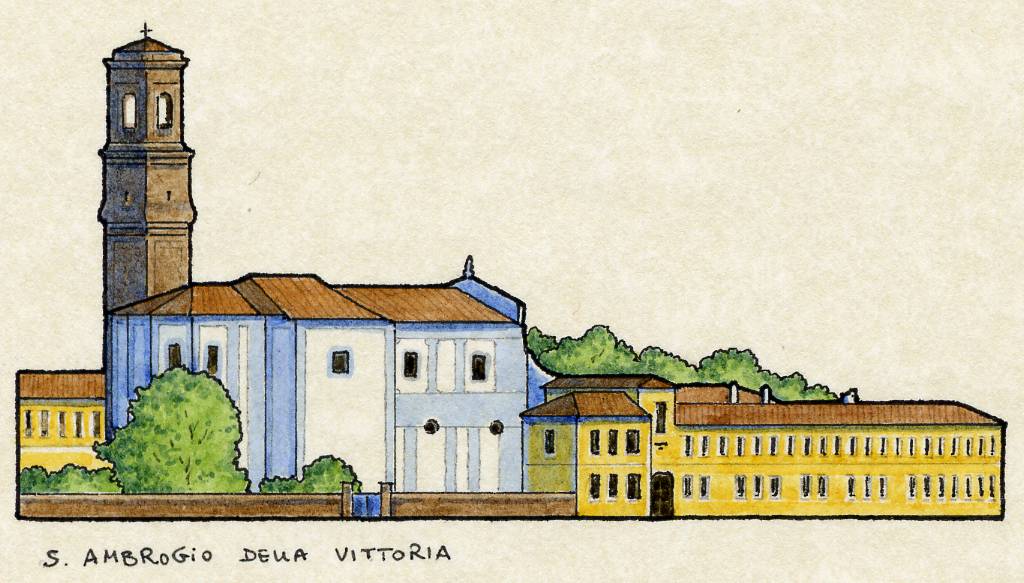Description

The Church
of Sant'Ambrogio della Vittoria was edified after the Battle of
Parabiago, in
1339; for the will of the winner city of Milan, led by Luchino and Azzone
Visconti. In 1645, the church was assigned to the Cistercians Priest of Lombardy.
In 1913 the church was declared National
Monument. This Monument, after the first edification, was subjected to
continual changes. But in 1606, the city of Milan commissioned to the architect Alessandro
Bisnati to find a new solution for
the building, cause the Gothic shapes appeared old and not useful. The
big
project proposed was a really big cost for Milan that at the death of the architect
in 1620, the works weren't either begin. At the same time a big change
up sat
the convent of Parabiago: in 1645 the order of Sant'Ambrigio ad Nemus,
which
fathers had been for centuries in the convent, was terminated by the
Pope. In
1647 the congregation of the Cistercians of Lombardy took the property.
The
didn't ask for money help to the city of Milan and they paid all the costs for the
upkeep of the church and of the convent.
Finally, in 1696, the convent was elected abbey of the order.
Walk
across the garden of the Monastery and go toward the church; the
buildings on
our left nowadays are the seat of a protected community for psychic
disable; on
our right there's the building of the
Cistercians abbey, now seat of the regional agency for the environment
protection. The convent was built in ten years, from 1699 until 1706
from the
cistercian monks, and there was also an important library. Let get in
by the
principal door, the one with the sign “arpa”. O the left, above the
lift, we
can see the memorial tablet that the monks hanged there to remind the
visit of
Queen Elisabetta Cristina of Brunswick, in 1708, that was traveling to
marry
the future console Carlo III, King of Spain. The prior Rainoldi spent a
lot of
money to host the queen with luxury, and to thank him the Queen granted
to the
monk water from the Riale to water the plants of the garden and for the
aquarium.
Now walk along the corridor on the left and after the glass door we can
admire
the monumental stair that expresses the power of the Cistercians order.
Built
between 1700 and 1702, the big stair is made of two flight with
fret-worked
balustrades with rock carving inspired to the nature, like flowers.
Four
human-sized knights that remind us the ancient parade complete the
building.
His importance is that it's a prototype of the monumental stair of the
eighteenth-century, nowadays really rare in the zone of
Milan. On the wall there's a painting of an
unknown painter that represents S. Carlo while he's putting the first
stone of
a church in Milan. Now we can leave the monumental stairs and go
back to the square.
Deepening

